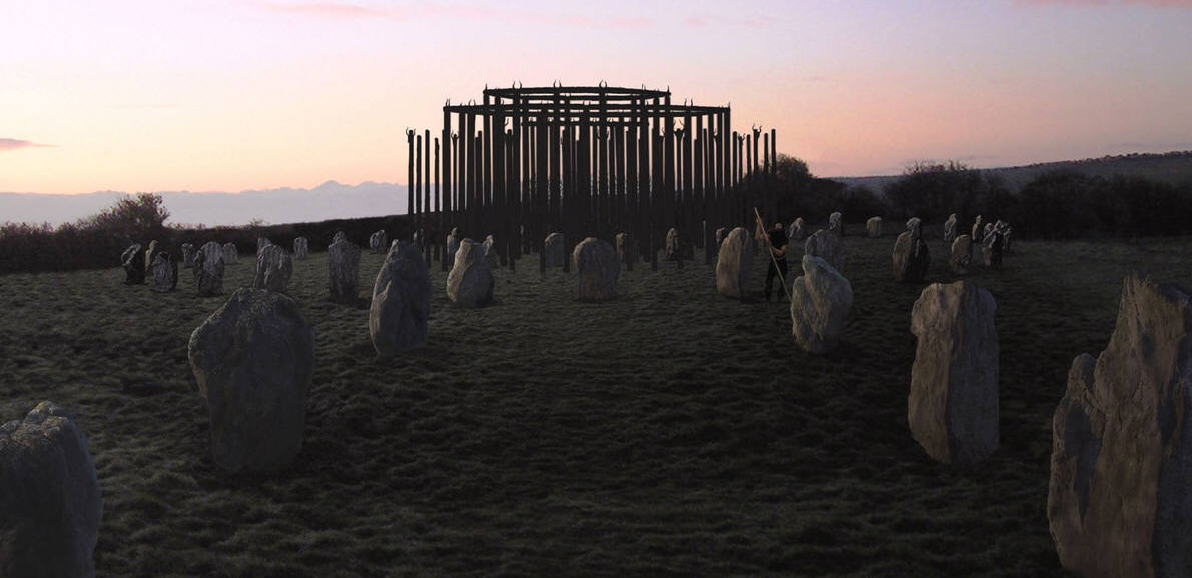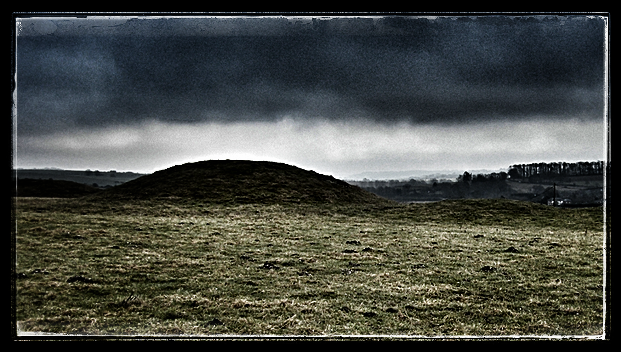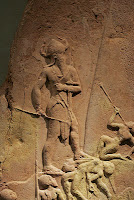Return...
After the midwinter, and after being so ill, I have concentrated on archaeoastronomy. In many ways it is a lot easier than the task I set myself in this blog, despite there being mathematics involved. The stars now are different to the stars then, but the sun and moon are far more consistent...thank goodness.
But it is time to return to to all the work I have done here. Primarily putting all my words about Woodhenge and The Sanctuary into order.
And to return to the connections; the flow of artefacts and ideas from over there (Mycenaean, Minoan, Hititte) through Europe to over here (Wessex).
Woodhenge and The Sanctuary were timber circles, it is quite possible that Stonehenge is a stone 'timber' circle.
What does this tell us about timber circles?
The whole thing is confusing.
There is evidence of feasting, of cremated remains and of central and peripheral burials of a whole person at all three sites. There were a lot of cremated remains at Stonehenge, one perhaps at Woodhenge and none as far as I remember at The Sanctuary. But to be honest I'm not sure about the actual numbers of finds. All three sites have burials. All three were places of feasting, of 'conspicuous consumption' and of 'structured deposits'...
Woodhenge is the hardest of the three places to put into context. There were round barrows close by, if I remember Maud Cunnington's notes correctly.. These barrows are now gone, but originally there was a close connection between both timber circles, Stonehenge, and round barrows.
Mike Pearson Parker puts Woodhenge in the domain of the living. Aubrey Burl once described Stonehenge as a 'Ghost cage'. And if Woodhenge and The Sanctuary were truly wooden prequels to Stonehenge, then they too are domains of the un-living.
The main argument for timber circles as symbolic round barrows points out the similarity in inner construction. Some round barrows began as timber circles, latter enclosed by earth. The wooden posts functioned to give support to the structure.
The presence of Grooved Ware buried deep inside the post holes of timber henges suggest that they were constructed before the Bronze Age barrows were raised. But on the other hand, it is just possible that shards of what was even then ancient pottery, was placed reverently under the earth by Bronze age people at Woodhenge and The Sanctuary, and its burial was not contemporary with its prime use.
It is said that the round barrows and the burial rituals that occurred there accompanied the spread of a new warrior aristocracy from Southern Germany and Scandinavia. And the construction of the burial mound is a copy of the Tholos used by the Mycenaean Greeks, echoing a cosmology common to both the Mycenaean and Scandinavians with the outer ring of curb stones representing the Sun Wheel.
When the rings are covered by earth, the barrow is the image of the rising sun linking heaven and the underworld, or perhaps as they were chalk and white as bone and as cold as the moon- perhaps the barrow was more lunar than solar.
The inner mound is made from earth brought to the tomb from the meadows, this is the grazing lands packed within the tomb to provide food for the cattle butchered to accompany the dead.
There is a translation from a Hittite royal burial ritual describing a piece of turf from a meadow being given in sacrifice:
There are similar ideas found in Irish mythology...
For sure The Sanctuary is laid out as a 'Sun Wheel'...
But it is time to return to to all the work I have done here. Primarily putting all my words about Woodhenge and The Sanctuary into order.
And to return to the connections; the flow of artefacts and ideas from over there (Mycenaean, Minoan, Hititte) through Europe to over here (Wessex).
Woodhenge and The Sanctuary were timber circles, it is quite possible that Stonehenge is a stone 'timber' circle.
What does this tell us about timber circles?
The whole thing is confusing.
There is evidence of feasting, of cremated remains and of central and peripheral burials of a whole person at all three sites. There were a lot of cremated remains at Stonehenge, one perhaps at Woodhenge and none as far as I remember at The Sanctuary. But to be honest I'm not sure about the actual numbers of finds. All three sites have burials. All three were places of feasting, of 'conspicuous consumption' and of 'structured deposits'...
Woodhenge is the hardest of the three places to put into context. There were round barrows close by, if I remember Maud Cunnington's notes correctly.. These barrows are now gone, but originally there was a close connection between both timber circles, Stonehenge, and round barrows.
Mike Pearson Parker puts Woodhenge in the domain of the living. Aubrey Burl once described Stonehenge as a 'Ghost cage'. And if Woodhenge and The Sanctuary were truly wooden prequels to Stonehenge, then they too are domains of the un-living.
The main argument for timber circles as symbolic round barrows points out the similarity in inner construction. Some round barrows began as timber circles, latter enclosed by earth. The wooden posts functioned to give support to the structure.
The presence of Grooved Ware buried deep inside the post holes of timber henges suggest that they were constructed before the Bronze Age barrows were raised. But on the other hand, it is just possible that shards of what was even then ancient pottery, was placed reverently under the earth by Bronze age people at Woodhenge and The Sanctuary, and its burial was not contemporary with its prime use.
It is said that the round barrows and the burial rituals that occurred there accompanied the spread of a new warrior aristocracy from Southern Germany and Scandinavia. And the construction of the burial mound is a copy of the Tholos used by the Mycenaean Greeks, echoing a cosmology common to both the Mycenaean and Scandinavians with the outer ring of curb stones representing the Sun Wheel.
When the rings are covered by earth, the barrow is the image of the rising sun linking heaven and the underworld, or perhaps as they were chalk and white as bone and as cold as the moon- perhaps the barrow was more lunar than solar.
The inner mound is made from earth brought to the tomb from the meadows, this is the grazing lands packed within the tomb to provide food for the cattle butchered to accompany the dead.
There is a translation from a Hittite royal burial ritual describing a piece of turf from a meadow being given in sacrifice:
"Now Sun god, accept these meadows as correctly taken in possession, and no one shall take them or question them. and on these meadows shall for him cows, sheep, horses and mules graze" (Hass 1994a: 224)
There are similar ideas found in Irish mythology...
For sure The Sanctuary is laid out as a 'Sun Wheel'...




